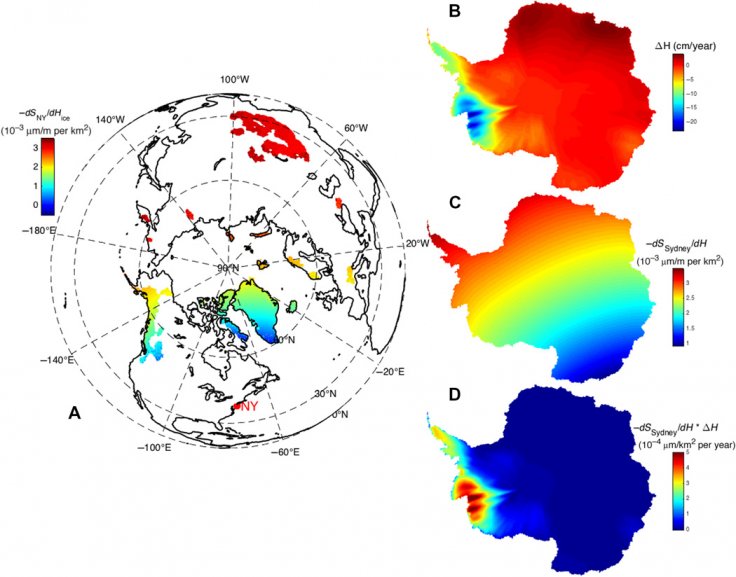
While the US and Canada residents are witnessing an extremely cold weather on New Year's Eve and New Year's day, the National Aeronautics and Space Administration (NASA) has published a picture from Antarctica which again triggers questions on global warming.
The aeronautic research centre has released a new image, which shows that a huge chunk of the iceberg called B-44 calved has broken off from Pine Island Glacier of Antarctica in 2017.
The image was taken in December 2017 around midnight local time by NASA's Landsat 8, which is an American Earth observation satellite. According to the research centre, based on few measures such as the horizon of the Sun, its elevation above the horizon, including the length of the shadows, scientists estimated that the iceberg rises about 49 meters above the waterline and more than 800 feet below the water surface.
However, the researchers got to know that the B-44 has broken into more than 20 pieces. Scientists believe that a pocket of warm water, known as 'polyna' is responsible for the phenomena by dividing the iceberg chunk from the glacier front and caused the rapid breakup of B-44.
Eric Rignot, a climate scientist at the University of California told The New York Times, "In some relatively colder years, we know the melt rate slowed down and the glaciers slowed down. On warm ocean years, the glacier moves really fast."
On the other hand, according to Phys.Org, a marine geophysicist at British Antarctic Survey, Robert Larter, who also visited Pine Island Glacier rift said, "What we're witnessing on Pine Island Glacier is worrying."
"We're now seeing changes in the calving behaviour of the ice shelf when for 68 years we saw a pattern of advance and retreat resulting in the calving of a single large iceberg which left the ice front to approximately the same place," he further added.
On the other hand, to point out which regions will be flooded when the ice sheets start to melt continuously, NASA has developed a predictive tool.

After seeing the condition of the changing weather and the global warming threat, scientists had said the since the Greenland ice sheets are closer to big cities like New York and London that means these areas are under danger.
However, the climate change is so prominent that the US and neighbourhood northern regions had witnessed a record cold winter, including partially frozen Niagara Falls. So, it is quite clear that climate change is the new threat to humankind.









